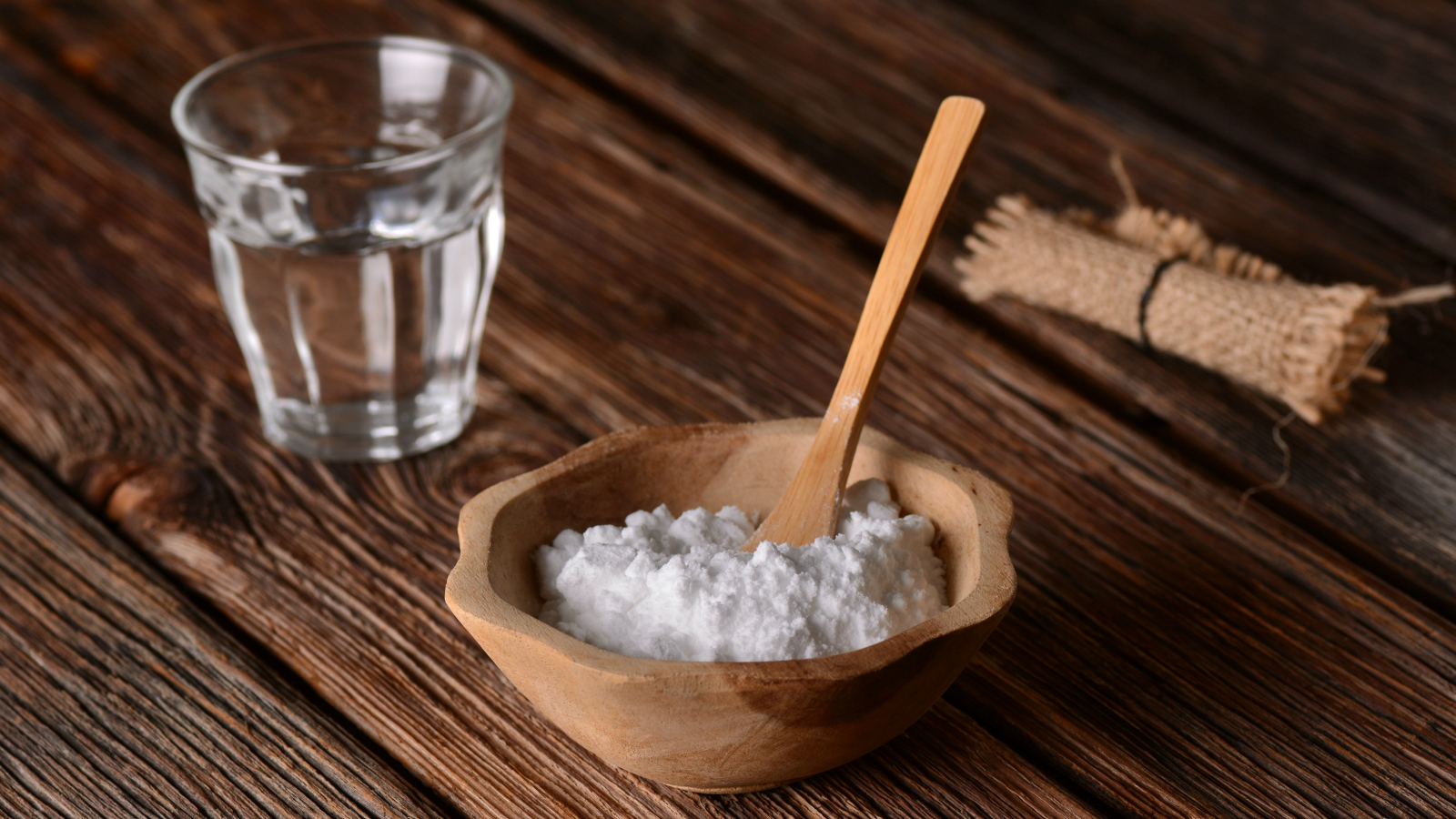Q. Dear Umbra,
In a quest to quit using nasty cleaning chemicals in my house, I’ve gone largely to vinegar and baking soda. I know vinegar is easy to produce, and should have little environmental damage, but what about baking soda? I know they mine it from the huge dry lakebeds here in California: I’ve visited one, and that visit made it seem like a resource that would be renewable in only very limited amounts. Can baking soda be easily synthesized from other sources, or is it once-and-done? Could we run out?
Dechenne C.
Phelan, California
A. Dearest Dechenne,
We here at Grist talk a lot about baking soda: how to clean our homes and laundry and hair and teeth and armpits with it, how to kill mold with it, and, naturally, how to cook up tasty treats with it. But strangely enough, we rarely ever discuss what this white wonder actually is, and from whence it comes, and whether or not we’re around the corner from a dire shortage. I’m glad you’ve brought this up, and even gladder to meet the kind of person who takes recreational trips to baking-soda mining operations. What are you up to this weekend? We should hang out.
But first, let’s dig into your question. You’re absolutely right that we haul baking soda right out of the ground — well, technically, we mine the minerals nahcolite and trona, both of which can be refined into soda ash (sodium carbonate, for my chemistry-minded friends). And soda ash begets baking soda (sodium bicarbonate), as well as a slew of other products, from glass to cloth to paper. Lucky for us, the world’s largest deposit of trona just happens to be right here in the U.S.: Wyoming’s Green River Basin, to be specific, which supplies 90 percent of the nation’s soda ash. California has a few lodes too, and we also have a rich bed of nahcolite in Colorado. Go USA!
We owe these riches to the magic of geologic time. Southwestern Wyoming, for example, was a huge freshwater lake 50 to 60 million years ago. The local climate ping-ponged from wet to dry; during wet periods, mineral-y mud created by the erosion of igneous rocks was swept in the lakebed, and then dried out to form trona deposits. At this point, Dechenne, you might be thinking that sounds kinda like fossil fuels such as oil and gas, nonrenewable resources we greenies are keen to avoid. Are we also washing, scrubbing, and cooking our way through the nation’s limited supply of baking soda as we speak?
Good news: We have a lot of trona lying around. According to the U.S. Geological Survey, Wyoming alone contains 56 billion tons of pure layered trona, plus 47 billion more tons mixed with other minerals. We’re only tapping trona at the rate of 15 million tons per year; the Wyoming Mining Association estimates that we have enough on hand to last more than 2,000 years.
That’s comforting, because while we can produce baking soda synthetically, we shouldn’t. A procedure known as the Solvay process turns limestone, salt, and ammonia into baking soda, but that comes with a set of environmental hazards: toxic wastewater, higher energy use, and a bigger carbon footprint. Better to go straight to the source.
But what about the mining itself? Doesn’t that have an impact, you might wonder? Well, it’s an extractive industry so … yes, it does. Mining companies use two approaches: In one, room-and-pillar mining (or dry mining), they build vast underground caverns supported by trona pillars, then scrape the mineral out of the earth and carry it to the surface with conveyor belts. In the other, solution mining (wet mining), the miners inject hot water deep into the deposits. The trona or nahcolite dissolves, gets pumped to the surface, and evaporates, leaving behind the mineral crystals.
Either way, the whole process uses energy, of course. And it also emits such nasties as volatile organic compounds, nitrogen oxides, and methane. These kinds of mining operations also threaten wildlife habitats worldwide, from flamingos’ stomping grounds in Tanzania to important lands for the sage grouse much closer to home.
Still, any product will have some kind of production impact. And given that baking soda is a highly effective, nontoxic wonder powder that can replace a laboratory’s worth of questionable-to-outright-hazardous chemicals in our lives, I still give it the Umbra Seal of Approval. Let’s not go wasting the stuff, but nor should we sweat this one too much. Though if you do, I have a great recipe for homemade baking-soda deodorant around here somewhere.
NaHCO-ly,
Umbra



